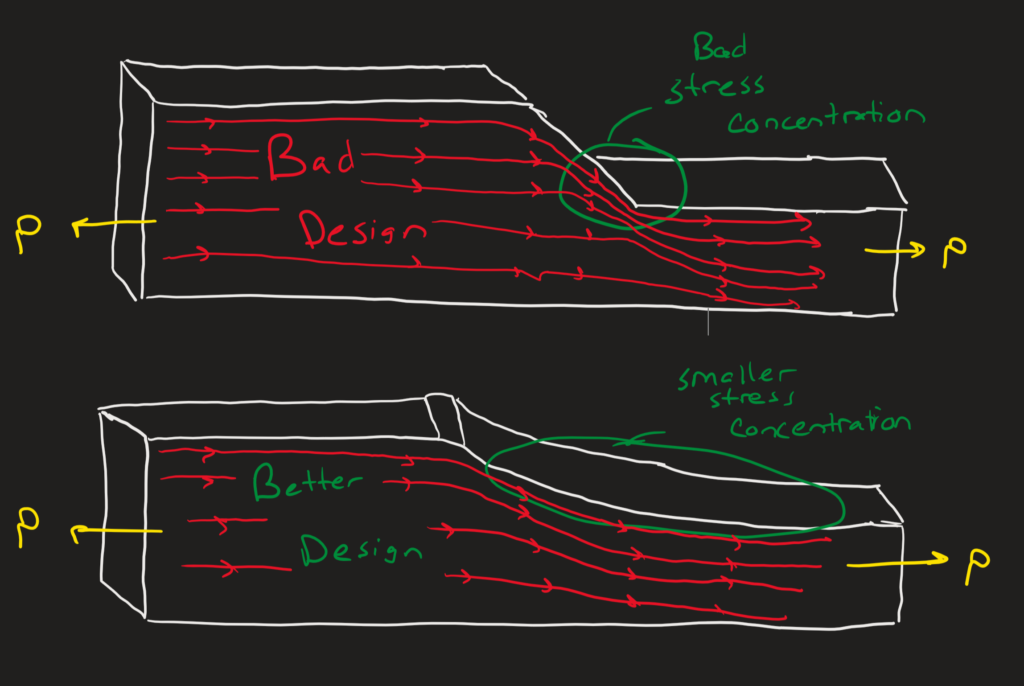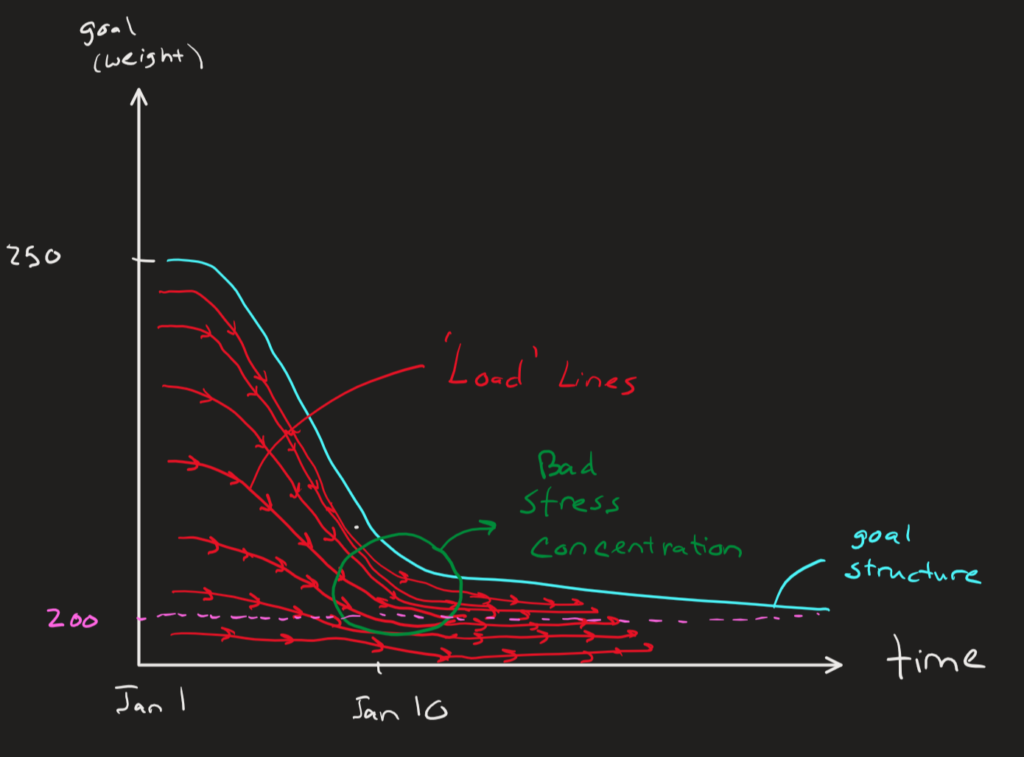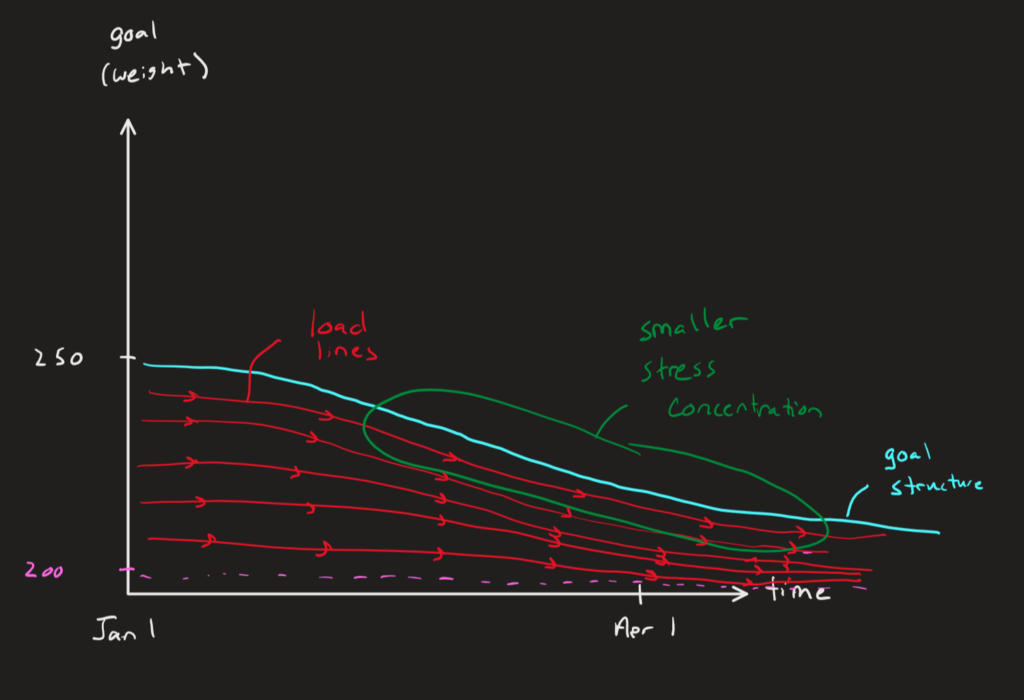Background
For anyone that doesn’t know, my professional background and formal education is in structural engineering. I am particularly excited about this post, because it is going to combine some of my favorite things – engineering & personal development. In structural engineering, there are these undesirable features known as ‘stress concentrations’. A stress concentration occurs in a component when there is a sudden change in geometry that causes an abundance of accumulated stress in a particular area. These things take form of sharp edges, sudden decreases in thickness, holes in the part, etc. The reason this happens is that originally (pre stress concentration) the load in a part is traveling through a certain area of material, think of this as steady traffic in an open highway. All of a sudden, two lanes close in the highway and people (load) have to merge. At this merger point, there is an extremely dense number of cars trying to squeeze into these fewer lanes causing a back-up of traffic. However, if the highway would close one lane first, then a few miles down the road they close the other, this would decrease the amount of pileup at one point. Not eliminate it – but mitigate it. The same thing happens to load in a part. If you change its path too quickly, a bunch of load piles up into one area – and this area is a stress concentration. This stress concentration can be mitigated by providing a smoother transition from one geometry to another. An illustration showing this phenomenon in a structural component is shown below. Note: I am not an artist.

Thoughts
Today is Friday, January 6th and the first week of 2023 is coming to an end – and so are a lot of resolutions. At the end of every year, people lay out a plan for the new year and set some new goals they want to accomplish. Some goals are big, some are small, some are related to fitness & health, some are related to work or personal life. And this is great. The biggest problem is that a lot of these resolutions are dropped within the first few weeks. These resolutions and goals aren’t dropped because people lose interest in them, or because they don’t want to do them anymore. These resolutions are dropped because people don’t see immediate results, because they get overwhelmed these drastic changes and drop it all together, because they don’t hold on long enough to cash in the vast payout from delayed gratification. These resolutions are dropped because people are designing the structure of their plan, and they are including stress concentrations.
Like I mentioned in the background portion of this post, in structural engineering stress concentrations are caused by a sudden change in geometry that leads to an abundance of accumulated stress in a particular area. When people ‘design’ their plan of attack to meet their goals and/or resolutions, they tend to look at the end goal and decide they want to get there as fast as possible – which is fine & dandy – but this isn’t sustainable. People like to bite off more than they can chew, go from one extreme to another, and then within the first week they are burnt out. The sudden change in their life geometry has provided an abundance of accumulated stress, which causes them to break. Instead of going from one extreme to another, instead of going from 3500 calories a day to 2000 calories the next day, instead of going from not stepping foot in a gym in a year to working out for 3 hours a day, reduce the stress concentration and provide yourself a smoother transition.


Design the ‘structure’ of your goals so that there is enough relief & an adequate transition so that you won’t break before you get to the final geometry. Establish your desired end goal, set a realistic & sustainable timeline, start small and keep at it.
Reduce your stress concentrations.


